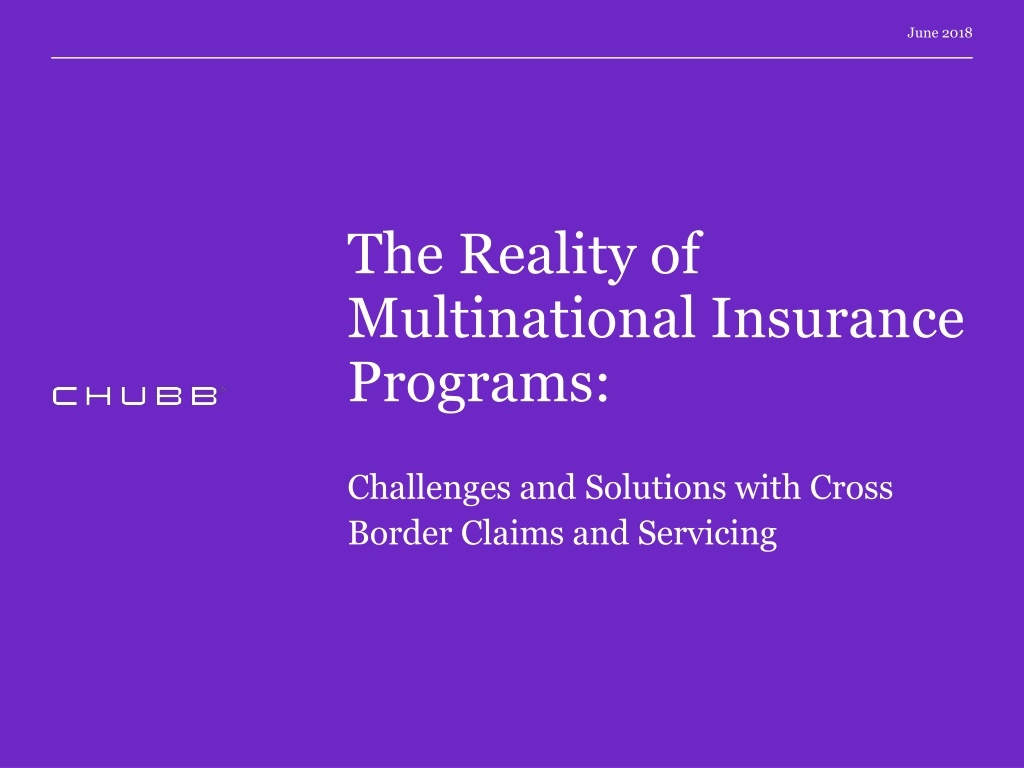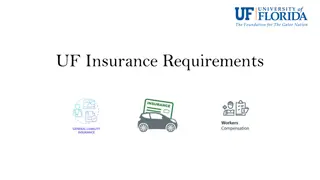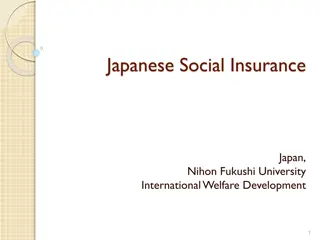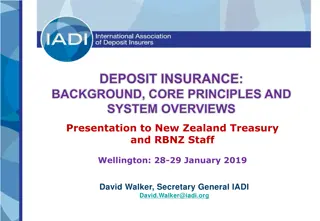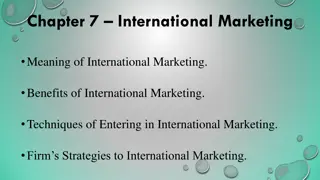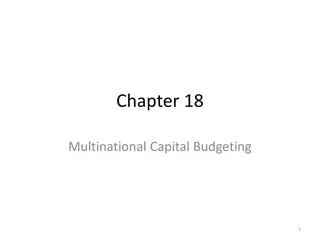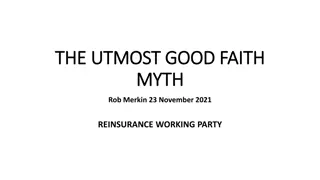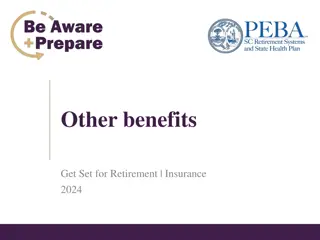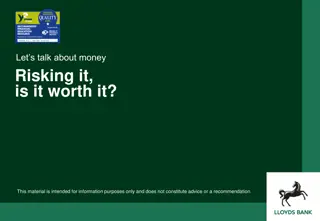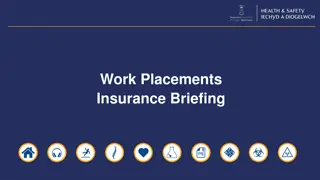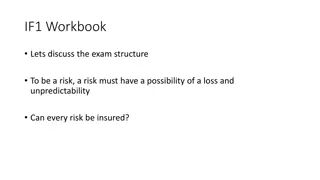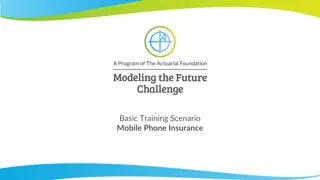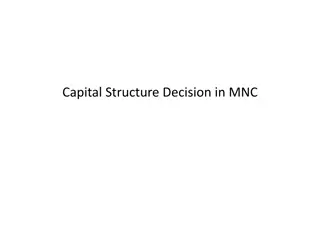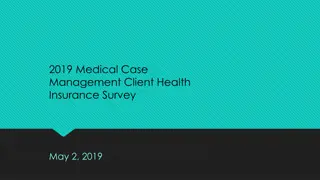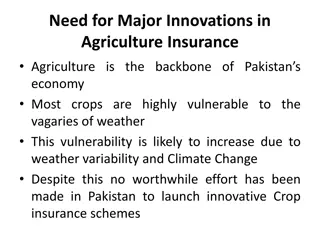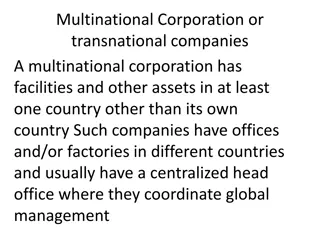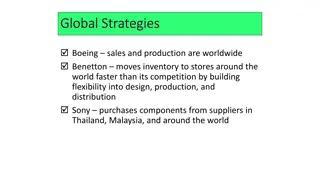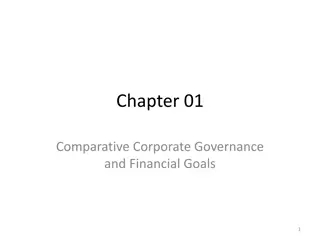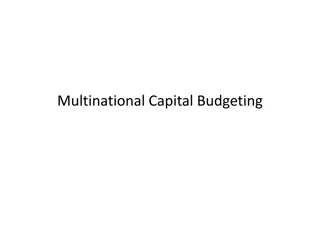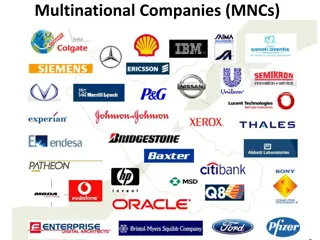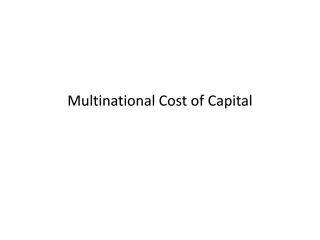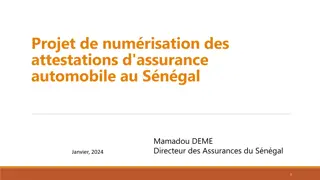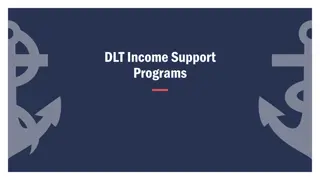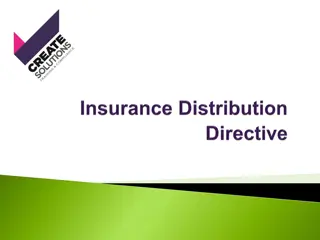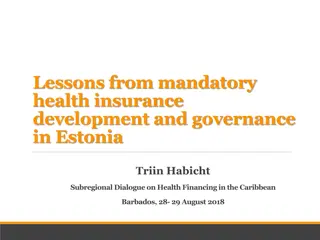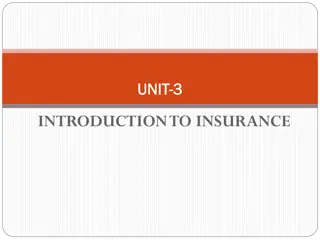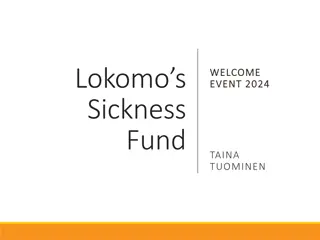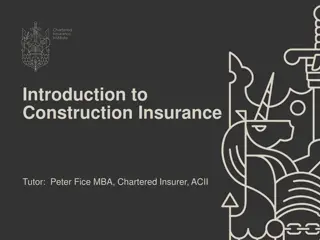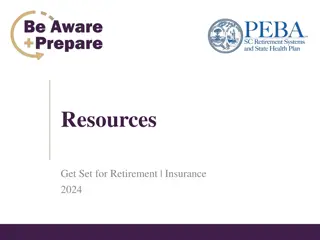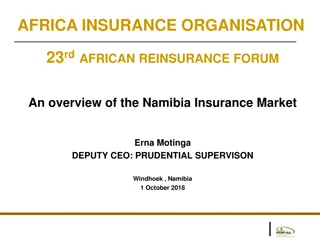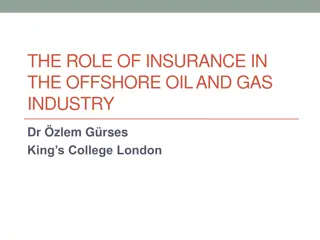Challenges and Solutions in Multinational Insurance Programs
Explore the complexities and solutions involved in multinational insurance programs, covering topics such as cross-border claims, servicing, policy structures, and freedom of services. Learn about the challenges in non-admitted countries, the concept of Freedom of Services (FOS), and the importance of effective communication and compliance with legal and regulatory requirements in global insurance operations.
Download Presentation

Please find below an Image/Link to download the presentation.
The content on the website is provided AS IS for your information and personal use only. It may not be sold, licensed, or shared on other websites without obtaining consent from the author. Download presentation by click this link. If you encounter any issues during the download, it is possible that the publisher has removed the file from their server.
E N D
Presentation Transcript
June 2018 The Reality of Multinational Insurance Programs: Challenges and Solutions with Cross Border Claims and Servicing
June 2018 Content Overview Multinational Programmes 3 Structure 6 Freedom of Services 7 DIC/ DIL 8 FEL Endorsements 9 Examples 10 2
Overview MN Programmes 3 options to cover risks for customers with operations in more than one country 1 2 Decentralized approach: One policy in each country, no link between them Global approach: Single policy from headquarters covering all countries 3 Multinational Program: Master + Local policies with the same insurer The solution for each client should take into account: Licenses which must be held by insurers and brokers Legal and regulatory rules Tax law (payment of premium tax in the country of risk) Mandatory coverage Proof of Insurance required by local operations Wording to be issued locally Communication between the parties Transparency 3
Structure - Challenges Non-admitted permitted countries: Countries where an insurer is permitted to write without licence on a non-admitted basis Australia, Canada, Chile, Germany, Peru, Sweden, UK, United States (conditionally) In practice, many countries permit unlicensed insurance but impose differing levels of restrictions Non-admitted prohibited countries: Countries where an insurer (holding no license) is not permitted to cover risks in the relevant country Most restrictive Argentina, Brazil, China, India, Japan, Mexico, Russia, Switzerland No easy dividing line between countries that permit non-admitted insurance and those that do not. 4
Freedom of Services (FOS) What is it? Ability for an insurer located in the European Economic Area (EU plus Iceland, Liechtenstein and Norway) and benefiting from necessary licenses to cover under one single policy risks from other EEA countries. Local client may need a policy in their own language, or adapted to specific requirements Policy is written in home country language (translation is not mandatory) Cover matches risk manager s needs Communication problems due to language, legislation and market practices, particularly during claim investigation A single policy: simpler administration Claim settlement is simple Access to some pools may not be possible under FOS No local fronting costs 5
Overview - Multinational Programs Non-compliance Examples Claims cannot be paid Argentina - 2009 - local insured and broker fined for illegally transacting life insurance business with an unlicensed foreign insurer. Fines Additional taxes charged on claims payments (income; increased capital) Brazil - 2011 - US insurer got a USD 6.2 billion fine for illegally selling life insurance in Brazil. Loss of license India - 2011 - local insured taxed on a claims payment paid outside of India to its corporate parent under a DIC/DIL clause in a master policy. Reputational damage Personal jurisdiction increased legal costs Non-compliance Examples Proof of insurance does not meet contractual requirements Local Insured not able to obtain the keys for his newly rented shop because the insurance certificate provided does not match the requirements of the rental agreement Limits inappropriate to local risks Master policy wording implemented locally instead if using local wording Insufficient limit in Australia because sales contract requests AUD 10M from an admitted insurer and local policy had 1M USD Misunderstanding from local insurer on how to handle claims under a manuscript wording as clauses are not familiar to local market 6
Structure -DIC/ DIL The local policy usually provides cover to a good local standard The Master policy usually provides a broader scope of cover than the individual local policies Difference in Limits (DIL) cover addresses the gap in limits between local and master policies Difference in Conditions (DIC) cover closes the gap between the cover provided by the local and master policies Master Policy Local Policy limit 100 Coverage A Coverage A Coverage B Coverage B limit 10 Coverage C Coverage C Coverage D Coverage D DIC DIL 7
Financial Interest Clause Issue: Findings: 1. In countries where non-admitted is prohibited , DIC/ DIL coverage under the Master Policy is not permitted for non-admitted insurers if a local entity is not covered locally, or not sufficiently covered, since Master policy insurer can not indemnify local entity, 2. Some specialty products are not available in every territory (Cyber, Crime, etc) parent company suffers a financial loss 3. Coverage gap exists and / or local policy cannot be placed Solution under the Master: Definition for insured does not include local entities located in territories where non admitted is not permitted + Master policy indirectly provides an indemnity via the coverage of the financial interest of the parent company in the local entity 8
Claims Example (1) The customer was global packaging company, headquartered in Singapore. The customer s Korea subsidiary received a claim from one of its clients about a non- conforming product (aluminum cans). Metal particles were found outside the lid of the aluminum can, presenting a hazard to consumers. The insured had a controlled master multinational program bound in Singapore. It included a locally issued policy in Korea. 9
Claim Example (1) Q&A Scenario: Claim totals $4m and Local policy limit is $5m. 1. Who handles the claim? Korean insurer 2. Who pays the claim? Korean insurer Not so fast ! Did you check if local policy wording was covering that claim 3. Who is paid? Korean local subsidiary 10
Claims Example (1) When it Works Well Notification following a regulatory investigation in Korea. Claim immediately reported by broker and customer in both territories. Claims handling in Korea; coordination in Singapore. Agreed claims protocol in place. Claim required a payment to the customer s Korea branch. Due to restrictions on non-admitted insurance in Korea, only a Korean licensed insurer was able to make claim payment. Subsequent to settlement, insurer s Korean office was reimbursed by Singapore office, which in turn recovered from customer in Singapore, eroding the aggregate deductible. 11
Claims Example (1) Summary of Issues Communication due to having a controlled, documented and clear claims protocol, the customer and broker at both local level and at head office were clear on the claim s progress, coverage position, throughout the life of the claim. This was particularly important given language difficulties. Control the handling team in Korea were aware that the producing office, customer and broker needed to be informed about the settlement of the claim, even though claim was entirely covered within local policy terms. Coordination through use of Chubb s local expertise in Korea, an expert metallurgist in Korea was able to be retained to enhance the claim outcome. Outcome the claim was paid in full and the deductible recovered from the customer in a fully compliant manner. 12
Claims Example (2) Mining company based in Mexico with operations in several countries in Asia. Substantial explosion in nickel refinery in Korea. Local customer had limited insurance or legal expertise. Global policy no local policy in place!! 13
Claims Example (2) Q&A Scenario: Claim totals $40m 1. Who handles the claim? Korean customer 2. Who pays the claim? Mexican insurer 3. Who is paid? Parent company in Mexico 14
Claims Example (2) Where it Can Go Wrong Carrier s license and operations confined to Mexico: Unable to undertake claims related activity including retention of experts directly FEL option Customer s claims servicing involvement greatly heightened: Initial cost in engaging experts Indirect cost associated with sending COO to subsidiary site for 3 months Additional Implications: Regulation prevented payment from non-admitted insurer Payment to Parent additional tax liability when transferring funds to local subsidiary Regulatory and Financial Scrutiny 15
Claims Example (3) The customer was global packaging company, headquartered in Singapore. The customer s Korea subsidiary received a claim from one of its clients about a non- conforming product (aluminum cans). Metal particles were found outside the lid of the aluminum can, presenting a hazard to consumers. The insured had a controlled master multinational program bound in Singapore. It included a locally issued policy in Korea. 16
Claims Example (3) Scenario: Claim totals $12m. Local Limit is $5m 1. Who handles the claim? Korean insurer 2. Who pays the claim? Korean insurer $5m Singapore insurer $7m 3. Who is paid? Korean subsidiary company - $5m Parent company in Singapore - $7m 17
Purchasing/issuing local policies the Claims advantages In non-admitted prohibited countries (e.g. Argentina, Brazil, China, India, Japan, Mexico, Russia, Switzerland), local regulatory requirements are satisfied Claims are paid in the local country Follow local law and customs Local language Appropriate taxes paid in country Appropriate wording issued as per local market practice 18
What is the claims conclusion? Local policies are critical but having enough local limit and the right coverages is just as important!
Our Global Accounts proposition is based on client feedback: People dedicated expert teams built around your needs. Presence a global network and the financial strength to deliver on our promise. Solutions comprehensive cover for your traditional risks and innovative solutions, for emerging risks. Technology leading edge technology that helps you manage your global programme. Service knowing the teams working on your account are ensuring it is compliant and comprehensive.
